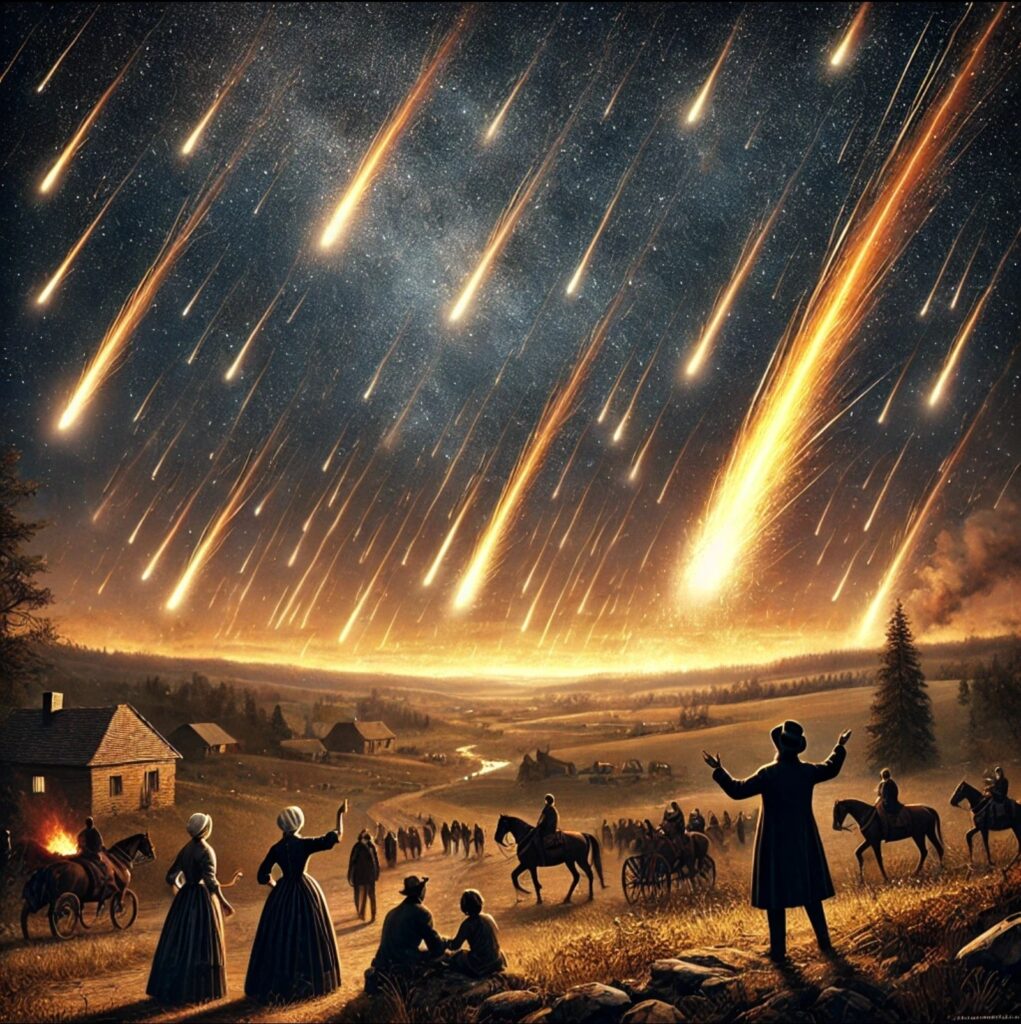On the night of November 12–13, 1833, the world witnessed one of the most breathtaking celestial events in recorded history—the Leonid meteor storm. With meteors streaking across the sky by the tens of thousands per hour, the event was so overwhelming that it left an indelible mark on science, religion, and culture.
A Sky Set Ablaze: The Unprecedented Meteor Shower
Eyewitnesses described the night as if the heavens had opened up, pouring down streams of fire. It was estimated that between 100,000 to 240,000 meteors per hour fell, filling the sky with an almost continuous display of shooting stars. The intensity of the storm made it visible across North America, with particularly striking views reported in the eastern United States.
Religious Panic and Apocalyptic Fears
For many, the 1833 meteor storm was not just a scientific marvel but a deeply spiritual event. At a time when celestial phenomena were often interpreted as divine signs, the sheer scale of the event led to widespread panic. Many people, especially in religious communities, believed it was the biblical “Stars falling from heaven” prophecy coming true. The event fueled the Second Great Awakening, a Protestant religious revival movement in the United States.
A Turning Point in Meteor Science
Prior to 1833, meteors were often thought to be atmospheric phenomena rather than objects from space. The overwhelming scale of the Leonid storm, however, sparked scientific curiosity. Astronomers began investigating the origins of meteor showers, leading to a groundbreaking realization—meteors were linked to comets.
The studies following the 1833 storm eventually led to the discovery that the Leonid meteor shower originates from Comet Tempel-Tuttle. This comet, which has an orbital period of 33 years, sheds debris that Earth passes through, creating the dazzling meteor displays. The storm helped solidify the idea that meteor showers are periodic and predictable.
Historical and Cultural Impact
The Leonid meteor storm of 1833 left a lasting impact on both science and society:
- Scientific Advancement: The event marked a major step in understanding meteor showers and their connection to comets.
- Religious Influence: It reinforced apocalyptic fears and played a role in shaping religious movements in 19th-century America.
- Cultural Legacy: The event became a part of folklore, with accounts passed down through generations.
A Once-in-a-Lifetime Event
Although the Leonid meteor shower occurs every year in mid-November, such intense storms are rare, occurring roughly every 33 years when Comet Tempel-Tuttle is near perihelion. The 1833 storm remains one of the most dramatic ever recorded, setting the stage for modern meteor science and leaving behind a legacy of wonder, fear, and discovery.

